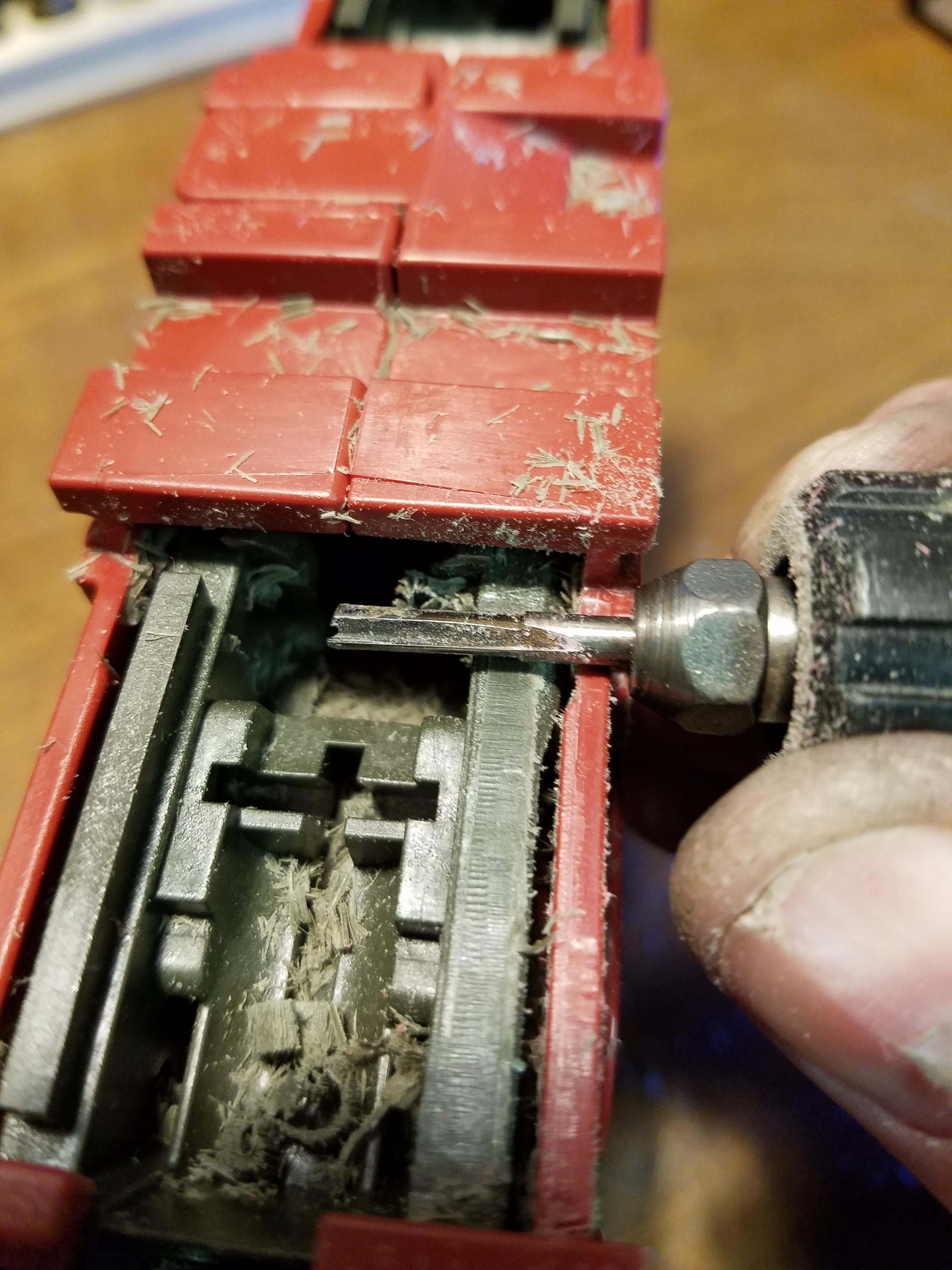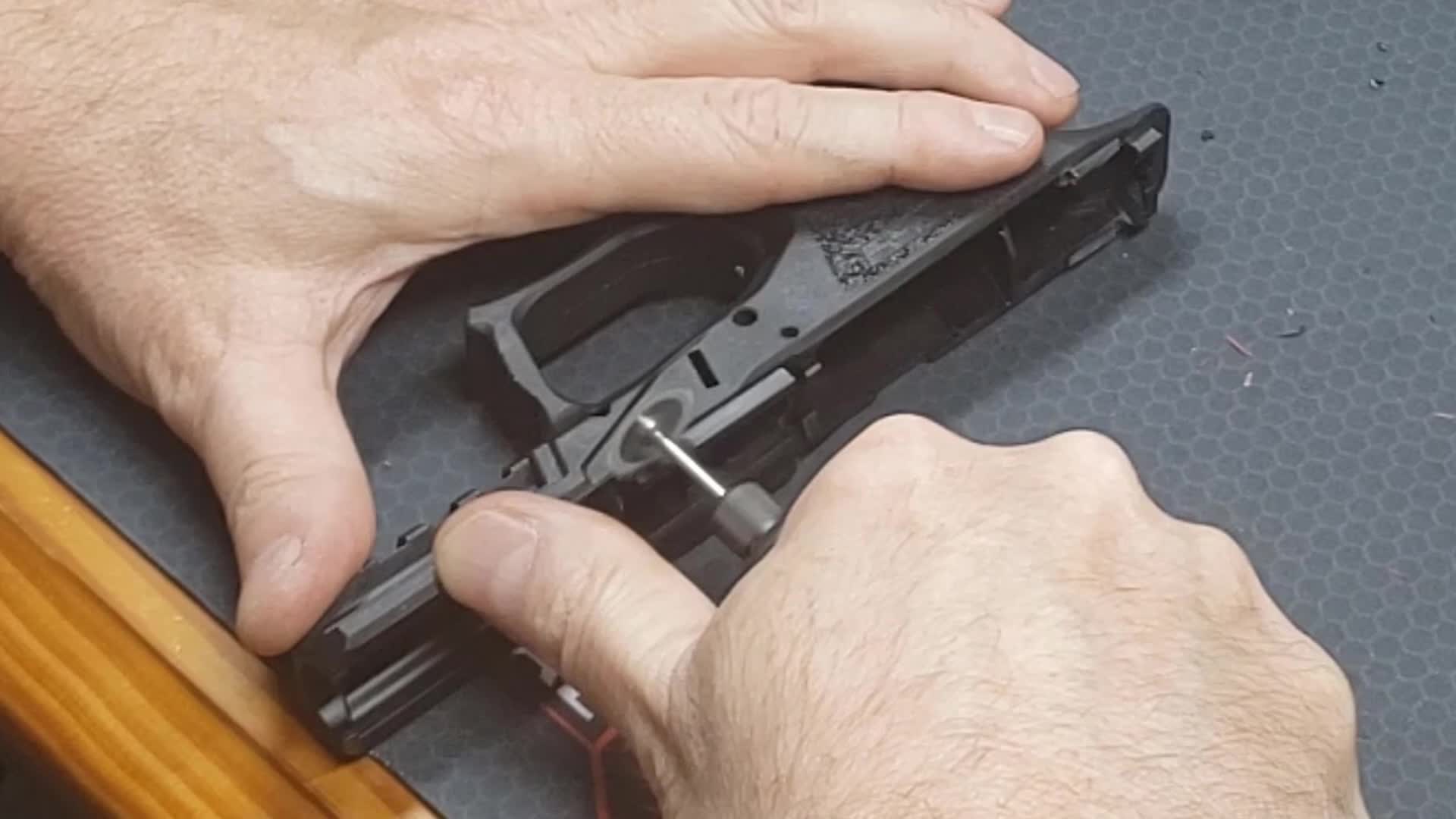-
Featured
- #1
So yeah, fret cutters if you have them. But what if you don't, and you only want to build one or two and are a cheap bastard like me. Well, if you own a Dremel, the answer will only cost you about $6.
Been using this bit to bevel the forend on M1's for years. Turns out, it does a nice job on the P80 tabs too.
Set the speed fairly high to prevent chatter. Buzz off 90% of the tab, and then slow down and get deliberate. Take very slow, light cuts. For the final passes, let the smooth portion of the cutter shank ride on the plastic jig. You will be left with very little file/sandpaper work to finish.
Unlike the sanding drum, you can get right up in the corners and it doesn't clog with melted plastic either.

After cutting, before filing/sanding.


Been using this bit to bevel the forend on M1's for years. Turns out, it does a nice job on the P80 tabs too.
Set the speed fairly high to prevent chatter. Buzz off 90% of the tab, and then slow down and get deliberate. Take very slow, light cuts. For the final passes, let the smooth portion of the cutter shank ride on the plastic jig. You will be left with very little file/sandpaper work to finish.
Unlike the sanding drum, you can get right up in the corners and it doesn't clog with melted plastic either.

After cutting, before filing/sanding.





